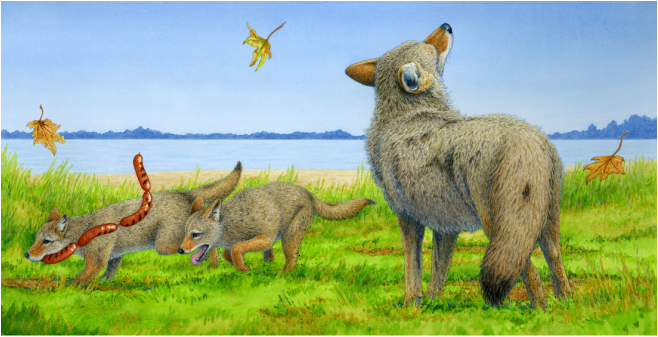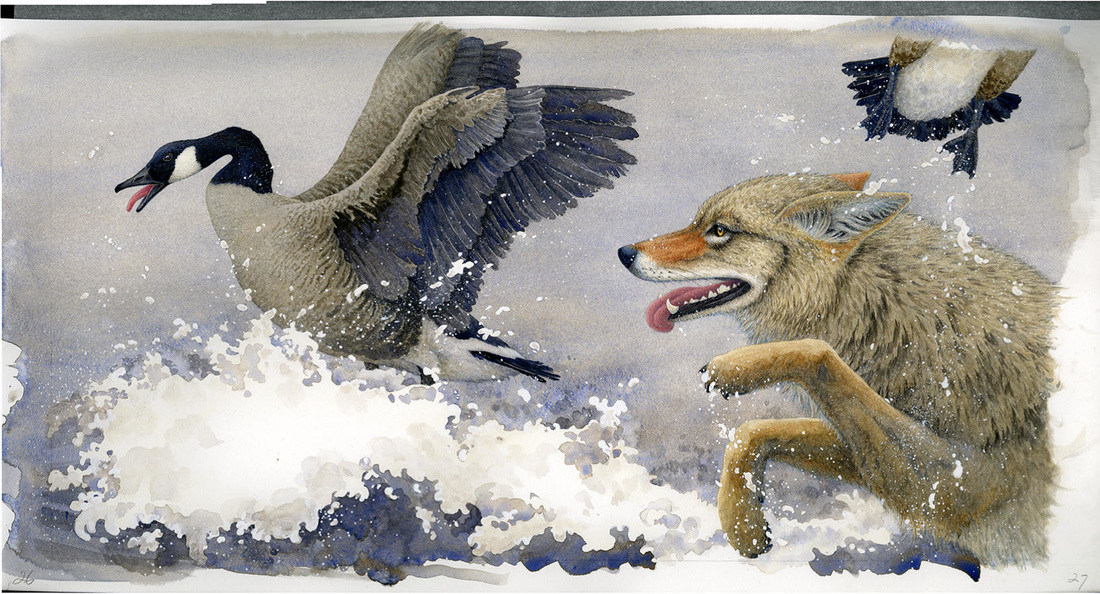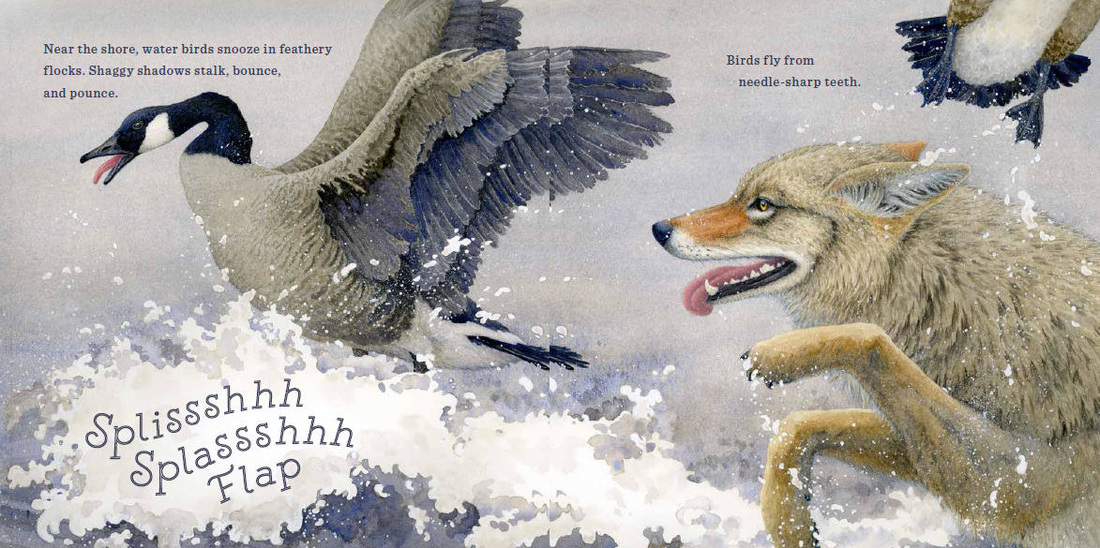
In Laurie’s words, the illustrations in a picture book “expand and enrich” the text. Each spread is viewed as a single unit but must flow with the whole and must “pique and sustain a child’s interest.” Color palettes, style, and medium enhance the mood. Visit any children’s bookstore and the sheer variety of art on display will take your breath away, ranging from Michael Hall’s bold, simple shapes in “My Heart is Like a Zoo” to the carefully researched detail of Sophie Blackall in “A Fine Dessert,” and the sweet whimsicality of Lori Nichols in “Maple.” Laurie used watercolor to add a sense of flow and washes of color to her paintings for “Hungry Coyote,” and touches of pencil “for punch.” She varied the color palette to reflect the seasons - the change from the icy blues and whites of winter to the warm yellows of spring is particularly affecting. On the spread showing a summer storm, two thirds of the illustration is painted in gray tones, reflecting danger and darkness, but in the corner where coyote herds his pups to safety the colors are warm and fresh, focusing us on the “heart” of the scene.
“Hungry Coyote” describes a year in the life of a fictional urban coyote and, as Laurie says, is often “somber and serious.” To give the book a touch of humor, she interpreted the “greasy feast” picnickers leave behind as a string of sausages. The rest of us might have thought of burgers, hot dogs, or even steaks, but the sausages add movement and humor and children love the resulting spreads (one is shown above).
Directional movement in a picture book is often from left to right – that’s the way we read English text - and it leads the reader naturally to the page turn. So how can an artist slow things down, keep the reader on a page to think about a particularly dramatic moment? By creating the directional movement from right to left. In “Hungry Coyote,” the spread where coyote chases a canada goose does just that. By facing coyote and the goose to the right Laurie makes us pause and dwell on the dramatic image. We wonder if coyote will succeed or the goose will escape. We ponder the life-and-death struggles in nature.


 RSS Feed
RSS Feed
